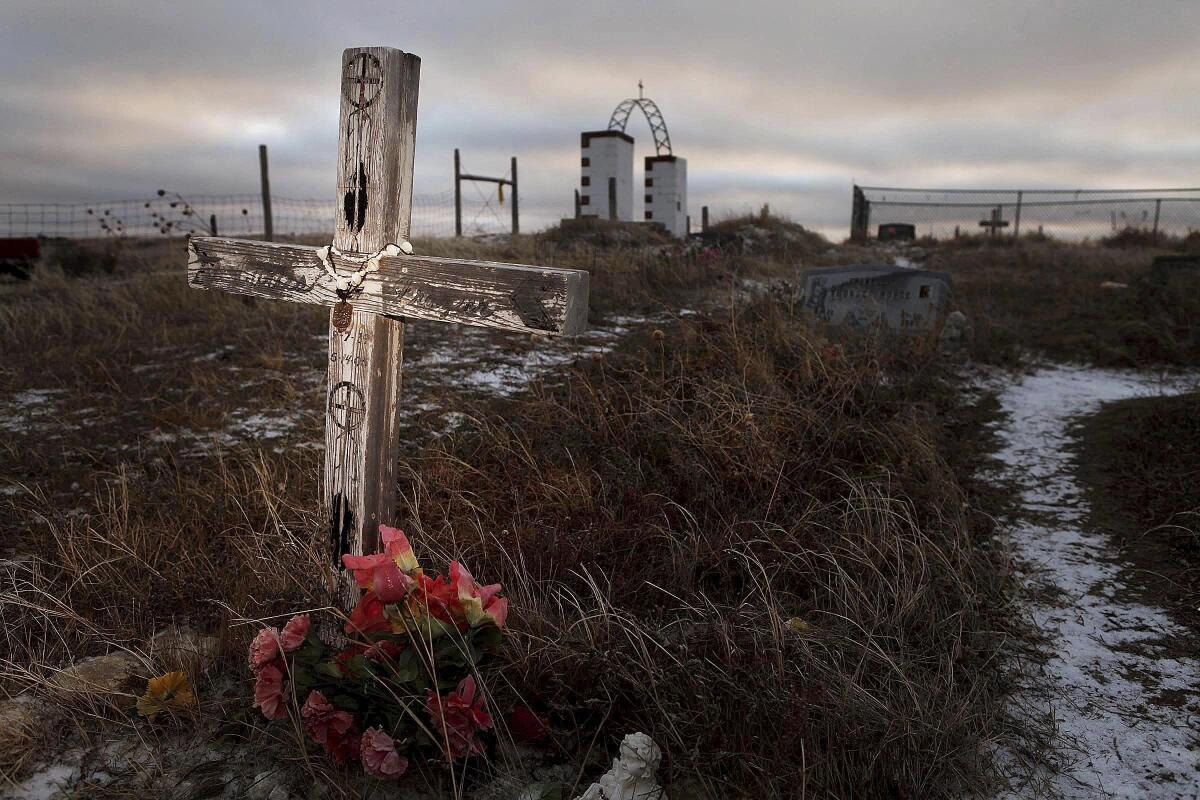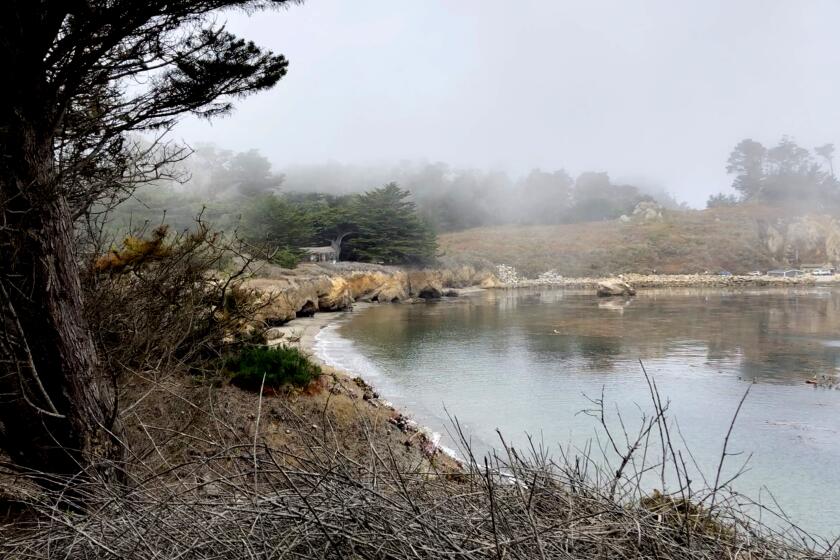South Dakota tribes buy land near Wounded Knee massacre site

- Share via
SIOUX FALLS, S.D. — Two American Indian tribes in South Dakota have joined forces to purchase 40 acres around the Wounded Knee National Historic Landmark, the site of one of the deadliest massacres in U.S. history.
The Oglala Sioux and the Cheyenne River Sioux said the purchase of the land on the Pine Ridge Indian Reservation was an act of cooperation to ensure the area was preserved as a sacred site. More than 200 Native Americans — including children and elderly people — were killed at Wounded Knee in 1890. The bloodshed marked a seminal moment in the frontier battles the U.S. Army waged against tribes.
“It’s a small step towards healing and really making sure that we as a tribe are protecting our critical areas and assets,” Oglala Sioux Tribe President Kevin Killer told the Associated Press.
For decades, few challenged Pacific Grove’s Feast of Lanterns, even when locals wore yellowface and slanted eyes. Now some see hope for a racial reconciliation.
The tribes agreed last week to petition the U.S. Department of the Interior to take the land into trust on behalf of both tribes. The Oglala Sioux Tribe will pay $255,000 and the Cheyenne River Sioux Tribe will pay $245,000 for the site, Indian Country Today reported. The title to the land will be held in the name of the Oglala Sioux Tribe.
Marlis Afraid of Hawk, a member of the Cheyenne River Sioux Tribe whose grandfather, Albert Afraid of Hawk, survived the 1890 massacre as a 13-year-old, said she was overjoyed to see the tribes take ownership. She said she carries on the oral tradition of telling her grandchildren how her grandfather survived by fleeing through a ravine after a rifle held by a U.S. cavalry soldier failed to fire at him.
As a member of a group that represents the descendants of the massacre’s survivors, she had initially raised objections to the Oglala Sioux Tribe’s purchase of the land, but said the joint purchase made her feel “honored and grateful.”
Members of the Oglala Sioux, Standing Rock Sioux, Rosebud Sioux and Cheyenne River Sioux tribes were all at Wounded Knee in 1890, Afraid of Hawk said.
She hoped the site could be used for “education for the people who come and see the massacre site.”
“They need to know the history. It needs to come through the true, true Lakota people,” she said.
The tribes’ agreement ends a decades-long dispute over ownership of a site that has figured largely in Indigenous people’s struggles with the U.S. government. Jeanette Czywczynski became sole owner of the property after her husband, James, died in 2019. He had purchased the property in 1968.
The Czywczynski family operated a trading post and museum there until 1973, when American Indian Movement protesters occupied the site, destroying the post and Czywczynski’s home.
The 71-day standoff that left two tribal members dead and a federal agent seriously wounded led to heightened awareness about Native American struggles and propelled a wider protest movement.
The family moved away from the area and put the land up for sale, asking $3.9 million for the 40-acre parcel nearest the massacre site even though the land, including an additional adjacent 40-acre plot, had been assessed at $14,000.
In 2013, film star Johnny Depp announced a plan to buy the property and donate it to the Oglala Sioux Tribe. Depp, who played the role of Tonto in a remake of the film “The Lone Ranger,” was criticized for trying to capitalize on the film by making unsubstantiated claims of having Native American ancestry. Depp did not follow through on the purchase.
Killer, the Oglala Sioux Tribe’s president, said the tribe’s resolution for the land purchase calls for it to be preserved as a sacred site.
“There’s still a lot of unresolved artifacts and items that should be left undisturbed,” he said.
Manny Iron Hawk, another member of the Wounded Knee Survivors Assn., said he saw the land acquisition as another step in the century-old American Indian revival movement known as the Ghost Dance. The U.S. military was trying to suppress the Ghost Dance in 1890 after it had swept across Indigenous communities with a prophecy that colonial expansion would end and Native American communities would unite for prosperity.
“The Ghost Dance was a beautiful dream for our people. It wasn’t a dream of death, it was a dream of life,” Iron Hawk said. “Today we are the new Ghost Dancers and we carry on a duty that came to us to do what we can for our relatives there at Wounded Knee.”
More to Read
Sign up for Essential California
The most important California stories and recommendations in your inbox every morning.
You may occasionally receive promotional content from the Los Angeles Times.











